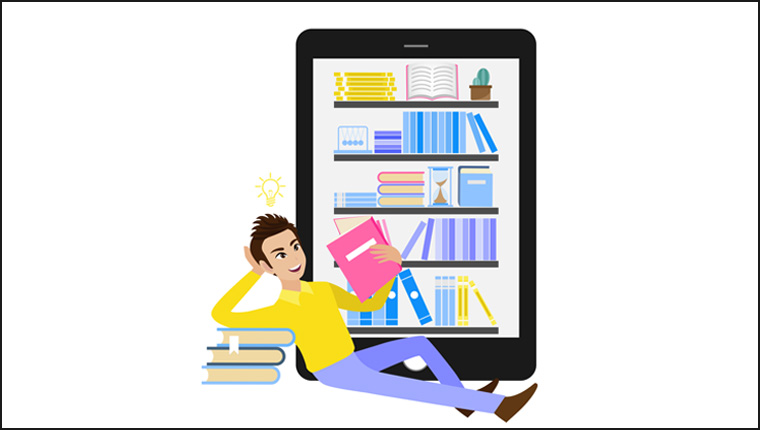Harness the Power of Informal Workplace Learning to Enhance Training

One of your colleagues is having a problem filling out an online form; what is he most likely to do, go to an eLearning course that explains the process or ask the colleague sitting next to him? If your answer is the latter, it is no surprise. Informal learning happens frequently in the workplace.
→ Download Now: Blended Learning — A Guide to Boost Employee Performance [eBook]
What can informal learning do?
- Appeal to employees at various skill levels
- Inspire employees to take charge of their training
- Happen in the daily workflow
- Encourage employees to learn beyond work-related topics
Why Informal Learning?
Often, when employees require some specific information to do their job or solve an issue, they bank on their previous experience or ask their colleagues. This informal learning is related to the way we naturally learn – through observation, interaction, and experiences. Despite having numerous eLearning courses and hours of ILT sessions to formally train employees, a significant part of workplace learning takes place informally.
This is not to undermine the importance of formal learning. It has its place in training employees by providing structured content, but falls short of helping them make organic discoveries. Informal learning on the other hand, promotes learning through on-the-job and social experiences.
In informal learning, learners set their own goals and objectives and they learn and enhance their skills by:
- Interacting with mentors and peers
- Reading articles/blogs
- Watching videos
- Participating in forums and chat sessions
- Solving problems
The learning that happens is spontaneous and, in most cases, is inspired by the learner’s desire to understand a topic or complete a task. There is no pressure of evaluation , but on the flip side, this makes it difficult to measure.
Differences between Formal and Informal Learning
Jay Cross in his path-breaking book, Informal Learning: Rediscovering the Natural Pathways That Inspire Innovation and Performance describes formal learning as riding a bus where passengers are taken on a predetermined route.
The journey is convenient and effective but restricts riders in the route they want to take. Cross says informal learning is like riding a bicycle where riders can choose the route and speed at which they want to travel and can even select the destination. The differences are:
- In formal learning, the learner has no control over the learning process, purpose, or the content while in informal learning, he determines these factors.
- Formal learning has a structured and organized format and is explicitly designed in terms of objectives, content, and duration. Informal learning is casual and unstructured and has no fixed schedule.
- In formal learning, the outcomes are specified while there are no specific outcomes for informal learning.
- Formal learning requires a conscious effort by the learner while this is not true for the other where the learner might not even be aware that he is learning.
Advantages of Informal Learning
- It can appeal to employees at various skill levels in your organization.
- Learning takes place in any setting – virtual or non-virtual – and can happen independently or in a collaborative environment.
- The lack of coercion to learn and putting employees in control of their learning inspires them to take charge of their training, whether it is to learn a new skill or improve knowledge.
- Learning happens in the daily workflow; employees learn when they need to solve a problem or tackle a situation at work.
- Lack of pressure to perform encourages employees to learn beyond work-related topics.

How L&D And Business Can Align to Conquer The Future Of Work
Bridging the Gap Between Organizational and Individual Goals!
- Learning Strategies Shaping the Future
- Changing Role of Learning Professionals
- Learning to Solve Business Challenges
- And More!
Informal Learning at the Workplace Using Digital Assets
There are various ways to promote informal learning at your workplace and you can put digital assets such as chat applications, social media, and the Internet to promote informal learning.
Online mentoring: New employees can be mentored online by senior employees to understand the business and learn about the processes in the company.
Live chat: Experienced employees can share their knowledge or expertise with other learners through a live chat function.
Social media: Sites such as LinkedIn and Facebook can be a treasure trove for industry information. Employees can connect online and increase awareness of latest industry news and trends. Apart from this, peer-driven social networks or professional learning communities can drive informal learning through blogs, wikis, forums, or discussion boards.
Mobile communication: Employees in different locations can communicate with each other via Skype, or other mobile apps. They can use their phones or tablets to post queries and pictures on problems to get an immediate response from colleagues.
Videos: Employees can make short videos to explain concepts or tips to other workers.
Online seminars: Employees can be given opportunities to attend online seminars by experts in the industry. The lack of pressure to complete the certification or other standards can motivate them to absorb what is of interest to them.
Informal Learning in a Formal Learning Framework
Modern organizations combine both formal and informal learning to provide a better training experience to employees. Informal learning can complement formal learning approaches. For instance, after completing an online course, employees can share their insights through blogs in the company’s social learning network or discuss it in the online forum.
Your LMS can be the hub to share this informal knowledge. The elements in your LMS that support collaborative learning such as discussion forums, wikis, and social platforms can create a virtual community for sharing this content.
With informal learning, you can encourage employees to generate their own learning content. The content based on experience is relevant and authentic, and more appealing to learners. An informal learning strategy can bring the desired training results because learning opportunities are rooted in the flow of work.
It provides opportunities for continuous improvement without the stress of formal evaluation. A collaborative learning environment can impact informal learning at the workplace. Our whitepaper Online Networked Learning Communities will give you a better insight.



![4 Ways to Facilitate Informal Learning at the Workplace [Infographic]](https://blog.commlabindia.com/hubfs/Imported_Blog_Media/informal-learning-workplace.jpg)

